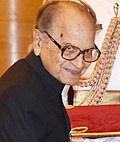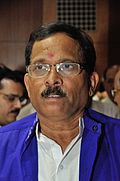| Branch of Government of India | |
 Ministry of Culture | |
 | |
| Agency overview | |
|---|---|
| Jurisdiction | Government of India |
| Headquarters | C-wing Shastri Bhawan New Delhi |
| Annual budget | ₹3,399.65 crore (US$400 million) (2023-24 est.) [1] |
| Ministers responsible |
|
| Website | www |
The Ministry of Culture is the Indian government ministry charged with preservation and promotion of art and culture of India.
Contents
- Characteristics
- Organisation
- List of ministers
- Cabinet Ministers
- Ministers of State
- References
- External links
Gajendra Singh Shekhawat is the current Minister of Culture. Recently the government has established the National Mission on Libraries India under this ministry. [2]
















